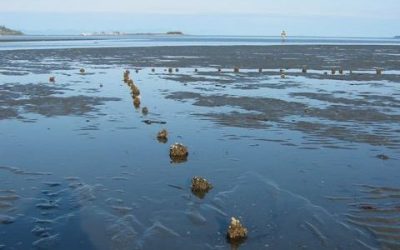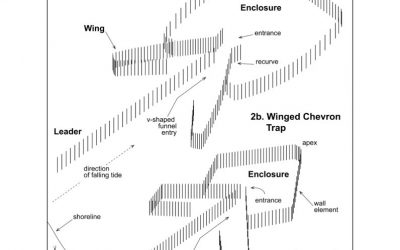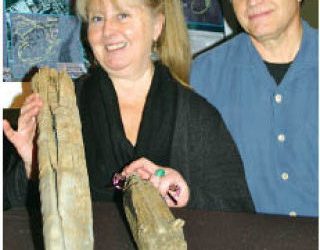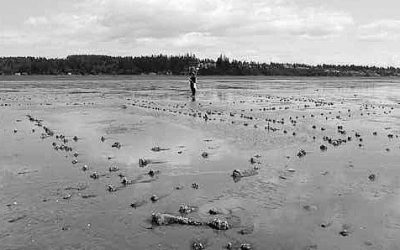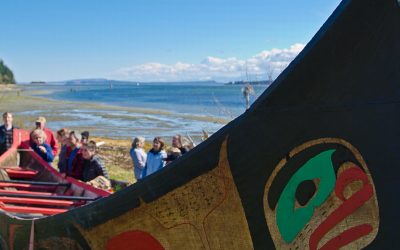Such contemporaneous, large-scale fishing activity at multiple locations in the estuary could have resulted in the capture of enormous quantities of fish.
Highlights from the Ancient Fish Trap Study
Two temporally and morphologically distinct trap types were utilized, and the shift from the Winged Heart trap type to the Winged Chevron trap type about 700 years ago appears abrupt and closely coincident with Little Ice Age climatic conditions and increased importance of salmon at Aboriginal village sites on west coast Vancouver Island, at Haida Gwaii (Queen Charlotte Islands) and south coast Alaska.
Ancient Fish Traps
A large scale, technologically sophisticated intertidal fishery in Courtenay, British Columbia. The information on this page comes from Comox Valley Archaeologists Nancy Greene and David McGee. While it is not a Project Watershed project, we proudly support this body of work.
Groundbreaking Archeology Celebrated!
Nancy Greene and David McGee, local archeologists and Comox Valley residents, are going to be speaking at the upcoming K'ómoks Estuary Seafood Dinner. Their groundbreaking research The Comox Harbour Fish Trap Complex: A Large-Scale, Technologically Sophisticated...
Stephen Hume: Archeology student publishes paper on ancient, industrial-scale First Nations fishery
England’s monarchs were sacrificing to Woden and persecuting Christian missionaries when First Nations managed a vast, highly-productive, industrial-scale fish harvesting complex in the estuary of the Courtenay River.
At first, the elaborate arrangement of 300 ingenious traps on the sandy flats of the river mouth harvested herring, which still mass to spawn off the east coast of Vancouver Island every March.
But 700 years ago, perhaps in response to climate change, the technology was altered to exploit pink, chum, coho, chinook and possibly sockeye salmon.
The K’ómoks Estuary- A cultural & archaeological treasure
This video was produced and prepared through the Comox Valley National Historic Site Committee, as a descriptive information piece to go along with the submission to the National Historic Sites and Monuments Board of Canada to respect, honor and give Historic Site recognition to the Ancient Wood Stake Fish Trap System studied by Community Archaeologist Nancy Greene and Geologist David McGee in the K’ómoks Estuary.
Estuary Archeology and Fish Traps
(Click the box icon in the top right corner of the document to view full size.)
Wooden stakes create archeological excitement
By Lindsay Chung - Comox Valley Record, Published: December 02, 2010 "There are thousands of wooden stakes sticking out of the mud in Comox Harbour. The stakes are the remains of a large aboriginal intertidal wood stake fish trap site, which is creating a lot of...


